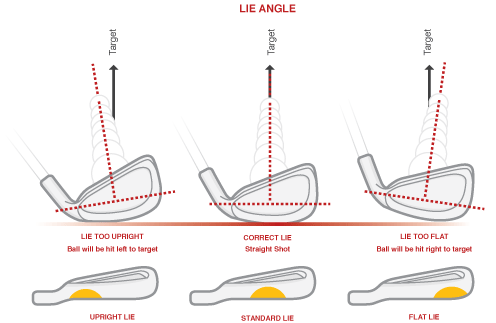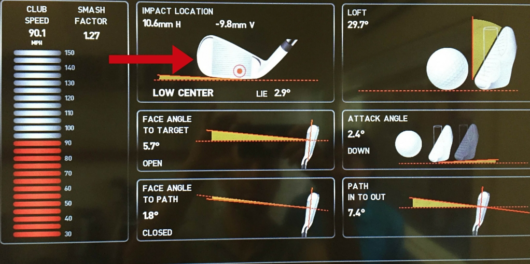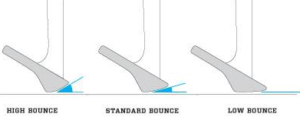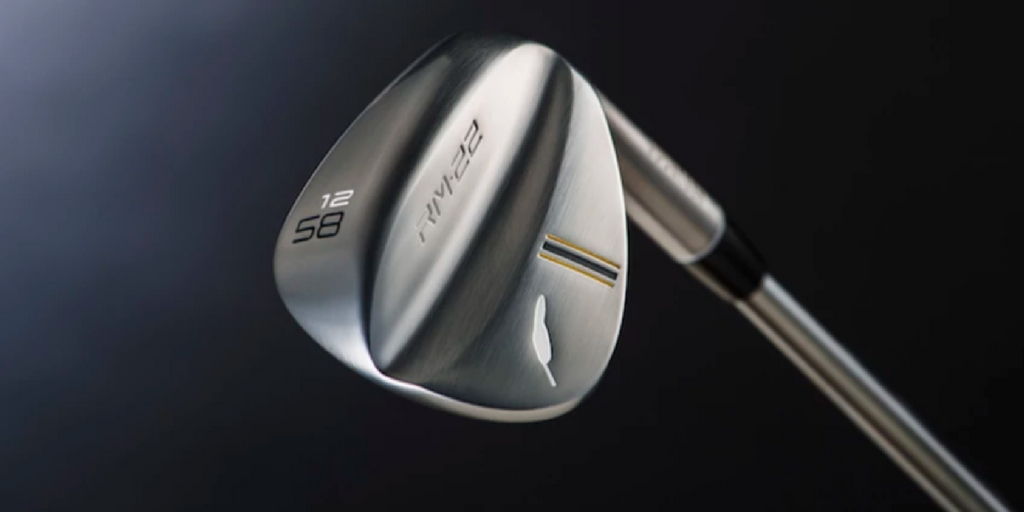Wedge play is one of the biggest factors in scoring for a golfer. Being able to control your distance, manage various lies, and hit your intended target is extremely important.
Having the right mixture of wedges with the proper specifications influences all of this. When we fit a golfer for wedges at Pete’s Golf our main goal is to make sure everything is dialed in for your particular swing, the types of shots you like to play, and the typical course conditions you are facing. As always, our goal is to make your good shots a little bit better, but more importantly, improve your performance on those less-than-perfect swings.
In this article, we will explore some of the most important factors for a wedge fitting and how it can alter your performance on the course. While this doesn’t cover everything (such as shaft profile), we have found that these three concepts are crucial.
Lie Angle
Getting the right lie angle for your wedges is extremely important. This affects how the heel and toe of the club interact with the turf. While we strive to get the lie angle correct for all of the irons in your bag, it makes the most difference on wedges.
Many golfers don’t know this, but having an incorrect lie angle on a wedge can result in shots going as much as 10-12 yards off your target line. Having a club that is too upright will force shots going left of your target, and to the right for a lie angle that is too flat. Simply put, playing with wedges that are not right for your swing will make it much harder to hit your intended target.
This image helps give a visual representation of ball flight when your lie angle is too upright or flat:

There are no standards in the golf club industry when it comes to lie angles. You’ll find different “standard” lie angles with each manufacturer. When we fit golfers for wedges we are able to directly measure what is optimal for your swing using our Foresight launch monitors and then make sure your wedges are built to those exact specifications.
In this image you can see how we evaluate the proper lie angle using our launch monitors:

When you have a scoring club in your hand you want to make sure you get the ball as close as possible to the pin. Getting this part of the fitting correct can have the most impact.
Wedge Gapping
Being a great wedge player is all about distance control. This is why having the correct lofts on all of your wedges is another crucial element to wedge fitting.
When we evaluate a golfer’s mixture of wedge lofts we are looking to accomplish a couple of goals:
- Give them more options around the greens with shot selection
- Maximize the amount of full swings they can take 100 yards and in
The best way to arrive at the right selection of lofts is a mixture of factors. When we go through the interview part of our fitting we’ll ask questions about what kinds of shots a golfer likes to play, and which are their favorite. Additionally, by understanding the center of gravity of their pitching wedge and gap wedge we can determine the proper spacing in lofts.
We want to make sure there are no unusual gaps in distances in between each wedge. Golfers tend to struggle when they are forced to make uncomfortable swings if the yardage does not match up to a full swing. Luckily, each manufacturer is providing multiple options in lofts that allow us to get the exact numbers we want. When we determine the correct lofts for your wedges we are then able to build them to the exact specifications required.
The Right Grind
The majority of recreational golfers are hitting less than 8 greens in regulation per round. That means on most holes they are going to have a wedge in their hands around the greens. This is where the right grind comes in.
The wedge grind will affect how the sole of the club interacts with the kinds of lies you will face on the course. Our preference is for golfers to have three different options (if they are playing that many wedges). For example, a 50-degree wedge would have a profile more appropriate for lower shots. Then the sand wedge could have an aggressive grind, which would give you more help out of the bunker and rough with higher bounce. Lastly, the lob wedge would be a medium grind and allow you to play out of a variety of lies like a tight fairway or in the rough.
However, depending on the specific needs of each player we will sometimes change that mixture.
Generally speaking, we like to give golfers wedges with enough bounce to provide a safety net. Wedge bounce is the angle between the ground and the sole of the club at address, which you can see in this picture:

The whole point of bounce is to prevent the leading edge of your club from digging into the ground. Typically we do not recommend low-bounce wedges to players because it can increase your margin of error around the greens. Our goal with any fitting is to give you more help on errant swings, and this is one area where a proper fitting can help save strokes.
Helping You Score
Everything that occurs 100 yards and in on the golf course can play a huge factor in your final score for the day. With the proper set of wedges, you are giving yourself the best chance at posting a lower number.
To book your next wedge fitting please visit this page. As always, if you have any questions don’t hesitate to contact us.

